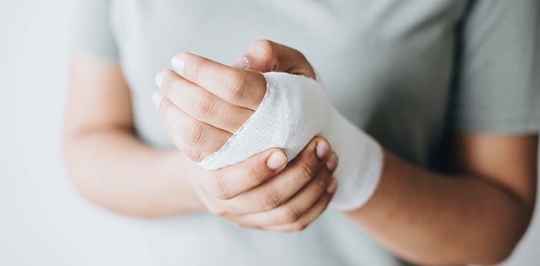Some of the most severe injuries require a process called “skin grafting.” This surgery will replace damaged or missing skin and return your body to a healthy condition. However, there are risks associated with skin grafting, and the healing process can be long and daunting.
What Is a Skin Graft Surgery?
Skin grafting is a type of surgery where healthy skin from one part of the body is moved, or transplanted, to another location. The healthy skin replaces damaged or missing skin.
When skin is transplanted from one area to another, the blood vessels in the healthy skin will grow and connect to the skin around the transplanted piece. This can help wounds heal faster and reduce scarring.
Where Does a Skin Graft Come From?
While medical providers typically get skin from a person’s own body to graft elsewhere (an autograft), the process may involve skin from a cadaver (allograft) or animal, such as a pig (xenograft). Xenografts are usually temporary and have a greater chance of rejection. Allografts and xenografts are only used when a person does not have enough of their own skin to cover a wound.
Types of Skin Grafts
Different types of skin graft surgeries may be needed depending on the type and severity of the injury.
A split-thickness skin graft (STSG) is a procedure where the top layer of skin (epidermis) and part of the second layer (dermis) are removed. This may be used to cover a larger area of damaged or missing skin. STSG skin is often taken from the thighs, bottom, belly, or back. It can take one to two weeks for it to heal.
A full-thickness skin graft (FTSG) occurs when the top layer and entire second layer of skin are removed and used to cover an area elsewhere. This requires more healing time but can have a more positive aesthetic. For this reason, FTSG is often used on body parts that are frequently seen, such as the face.
A composite graft involves a transplant of skin, cartilage, or other soft tissues. They can repair damage to the fingertips, nose, and ears. Composite grafts allow the surgeon to create structure and cover a damaged area.
What Injuries Require Skin Grafting?
Skin grafting may be required in any injury where the skin is damaged or missing entirely. Sometimes, skin on a wound may die and require replacement by healthy skin from another area of the body.
Common types of injuries that require skin grafting include:
- Burns
- Lacerations
- Road rash
- Ulcers
- Bedsores and pressure injuries
- Large wounds
What Are the Causes of Injuries That Require Skin Grafting?
Skin grafting is required for many serious injuries that occur on and off the job site. Some common causes for injuries that require skin grafting include:
- Oilfield explosions and fires
- Auto accidents
- Motorcycle accidents
- Pedestrian accidents
- Infections
- Skin cancer
- Slow-healing wounds
Any accident that results in injuries damaging a significant amount of skin or area of the body can lead to the need for skin grafting.
What Are the Complications in Skin Graft Surgeries?
Most skin grafts are successful, but if the skin does not heal or “take,” you may need an additional skin graft. Some complications or risks you need to watch for include:
- Pooling of blood under the transplanted skin
- Pus under or around the skin
- Infection
- Injury of the newly grafted skin
- Inhibited blood circulation that will reduce healing time
- Bleeding
- Contracture (the skin shrinks around the edges)
- Uneven or discolored skin
- Loss of sensation or sensitivity
- Chronic pain
- Scar tissue buildup around the graft site
What’s the Recovery Process Like?
The recovery time for a skin grafting surgery depends on the individual’s health and size of the skin graft. It may also vary depending on techniques used by the surgeon. A minor skin graft may take one to two weeks to heal. Larger areas can take months.
When you have a skin graft, you essentially develop two injuries instead of one. You must cover and dress both the initial injury and the location where the skin was obtained for transfer. The wounds must be kept protected, and strenuous exercise is not recommended.
You will likely need antibiotics, pain medication, and other drugs to reduce inflammation while you are healing. You will have to follow up with your doctor frequently after a skin graft so they can assess the skin’s health. You may need additional surgeries if the skin is rejected or begins to die.
Contact a Personal Injury Lawyer If You Were Injured
Skin grafts are often necessary after a severe injury that was caused by someone else. You shouldn’t have to pay for the actions of others. Let the personal injury lawyers at Kemmy Law Firm help you get the compensation you deserve.
Your financial recovery can help you pay for medical bills like physical therapy, skin grafting surgery, and more. Call us today at (830) 264-6297 or use our online form to schedule a consultation.
The post What Types of Injuries Require Skin Grafting? appeared first on Kemmy Law Firm.






